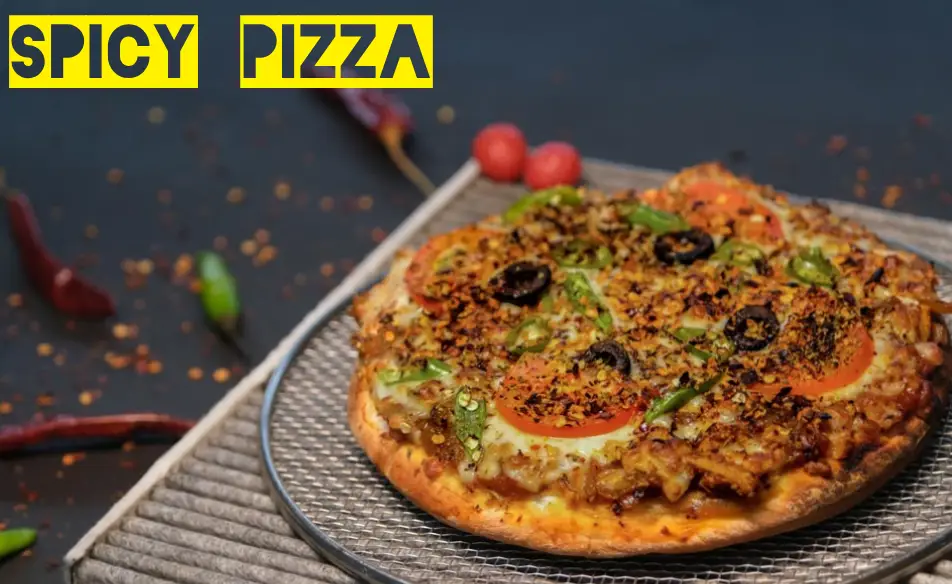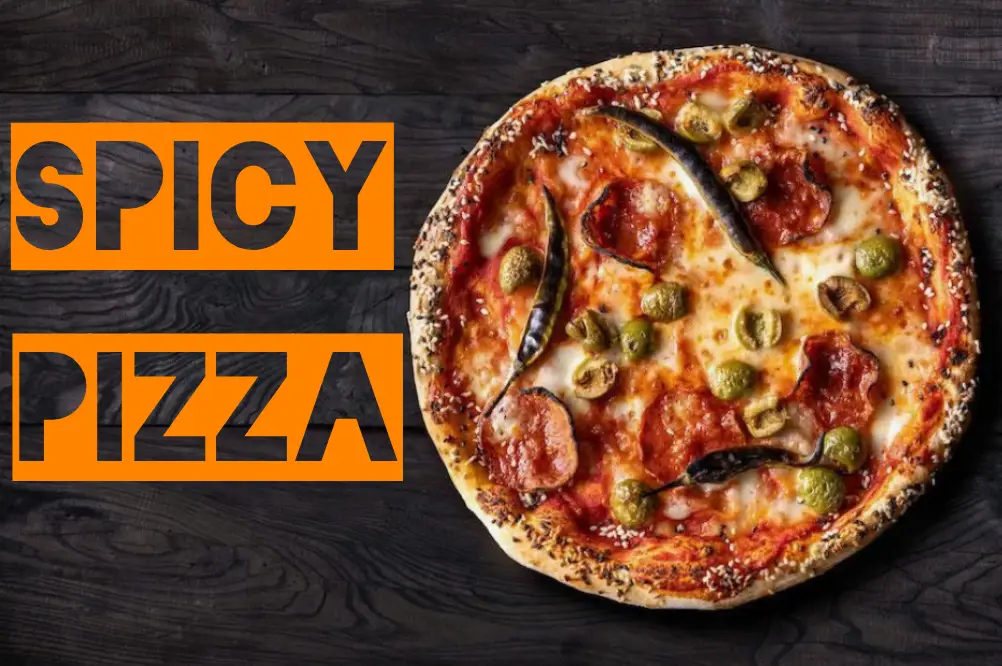Spicy pizza adds a fiery twist to the beloved classic, offering a tantalizing experience for pizza enthusiasts. Whether you’re a spice aficionado or simply curious about adding some heat to your pizza nights, this comprehensive guide will walk you through everything you need to know about creating and enjoying spicy pizzas at home. From choosing the right ingredients to mastering the perfect bake, let’s embark on a journey into the world of spicy pizzas.
Understanding Spicy Pizza
What Makes a Pizza Spicy?
Spicy pizza is characterized by its use of ingredients that add heat and flavor. The spice can come from various sources such as spicy sauces, peppers, and seasonings. It’s all about finding the right balance of heat that enhances the pizza’s overall taste without overwhelming it.
Popular Spicy Pizza Varieties
Explore different types of spicy pizzas that have gained popularity among pizza lovers:
Pepperoni and Jalapeño Pizza
A classic combination featuring spicy pepperoni slices and fresh jalapeños for an extra kick.
Spicy Sausage Pizza
Italian sausage infused with spicy seasonings like red pepper flakes or spicy Italian sausage varieties.
Chipotle Chicken Pizza
Tender chicken marinated in smoky chipotle sauce, paired with peppers and onions for a Southwestern-inspired twist.
Essential Ingredients for Spicy Pizzas
Creating a delicious spicy pizza starts with selecting the right ingredients that contribute to its fiery flavor profile. Here’s a breakdown of essential components:
Spicy Pizza Sauce
The cornerstone of any spicy pizza is its sauce. Opt for a robust tomato base infused with:
- Crushed Red Pepper Flakes: Adds a consistent heat throughout the sauce.
- Cayenne Pepper: Provides a fiery kick without overwhelming the palate.
- Hot Sauce: Incorporates depth and tanginess, enhancing the overall spiciness.
Fiery Toppings
Choose toppings that complement and amplify the heat of the pizza sauce:
- Spicy Pepperoni: Thinly sliced pepperoni with chili seasoning intensifies the spiciness.
- Fresh Jalapeños: Adds a crisp texture and a fresh burst of heat.
- Chorizo: Spanish chorizo or Mexican-style chorizo offers a savory and spicy addition.
- Pepper Jack Cheese: Creamy cheese with jalapeño peppers embedded for extra spiciness.
Fresh Herbs and Vegetables
Incorporate fresh ingredients to balance the heat and add complexity:
- Fresh Basil: Adds a hint of sweetness and freshness.
- Red Onions: Provides a mild sweetness and crunch.
- Bell Peppers: Colorful addition with a slight sweetness that contrasts with the spice.
Quality Cheese
Choose cheeses that complement the spicy flavors without overpowering them:
- Mozzarella: Melts smoothly and complements the heat with its mild flavor.
- Parmesan: Adds a nutty and savory depth to the pizza.
- Goat Cheese: Creamy and tangy, offering a unique contrast to the spiciness.
Additional Seasonings
Enhance the flavor profile with these seasonings:
- Garlic Powder: Adds aromatic depth without overwhelming the other flavors.
- Crushed Red Pepper Flakes: Sprinkle on top for an extra kick of heat.
- Oregano: Provides an earthy undertone that complements the overall spiciness.
Choosing Quality Ingredients
Opt for fresh and high-quality ingredients to ensure the best flavor and texture in your spicy pizza creation. Experiment with combinations to find the perfect balance of heat, flavor, and freshness that suits your taste preferences.
Mastering the Perfect Spicy Pizza
Preparing and Assembling the Pizza
Making the Dough
Start with a homemade pizza dough or store-bought crust. Roll it out to your desired thickness and shape on a floured surface.
Spreading the Sauce
Evenly spread the spicy pizza sauce over the dough, leaving a small border around the edges for the crust.
Adding Toppings
Layering Ingredients
Distribute your chosen toppings evenly over the sauce. Consider combining different textures and flavors for a well-rounded pizza experience.
Cheese and Seasonings
Sprinkle a generous amount of cheese over the pizza toppings. Add additional seasonings like garlic powder, dried oregano, or crushed red pepper flakes for extra flavor.
Baking to Perfection
Oven Settings
Preheat your oven to a high temperature (usually around 450°F to 500°F) to achieve a crisp crust and evenly melted cheese.
Baking Time
Slide the assembled pizza onto a preheated pizza stone or baking sheet. Bake for 10-15 minutes or until the crust is golden brown and the cheese is bubbly and lightly browned.
Tips for Enjoying Spicy Pizza
Pairing Suggestions
Enhance your spicy pizza experience with complementary sides and beverages:
- Cooling Sides: Serve with a side of ranch dressing, garlic breadsticks, or a fresh green salad to balance the heat.
- Refreshing Drinks: Pair with a cold beer, lemonade, or iced tea to quench your thirst and cool down your palate.
Serving and Presentation
Cutting and Serving
Allow the pizza to cool for a few minutes before slicing it into wedges or squares. Serve hot and enjoy the aroma and flavors of your homemade spicy pizza creation.
Leftover Ideas
Reheat leftover spicy pizza slices in a toaster oven or microwave for a quick and delicious meal. Serve with extra hot sauce or chili flakes for added heat.
Exploring Global Influences on Spicy Pizzas
Spicy pizzas are not just a staple in one culture but have been adapted and transformed around the world. Here’s how different culinary traditions influence the spicy pizza experience:
Mexican Influence
Mexican cuisine’s bold flavors and spices have made a significant impact on spicy pizzas:
- Chorizo: Mexican chorizo, with its robust spices and smoky flavor, is a popular topping choice.
- Jalapeños: Fresh or pickled jalapeños add a vibrant kick to pizzas, balancing heat with a hint of sweetness.
- Salsa Verde: A tangy and spicy green salsa often used as a sauce base or drizzled over the pizza.
Indian Fusion
Indian cuisine’s rich spices and vibrant flavors lend themselves beautifully to spicy pizzas:
- Tandoori Chicken: Marinated in yogurt and spices like cumin, coriander, and cayenne pepper, tandoori chicken adds a smoky and spicy element.
- Paneer Tikka: Indian cottage cheese marinated in a spicy yogurt sauce, offering a creamy texture and bold flavors.
- Curry Spices: A blend of spices like turmeric, cumin, and garam masala can be sprinkled over the pizza or incorporated into sauces for a distinctive taste.
Thai Inspiration
Thai cuisine’s use of fresh herbs, chili peppers, and tangy sauces creates a unique twist on spicy pizzas:
- Thai Chili Peppers: Small but potent, Thai chili peppers pack a punch and are often used to add heat to pizzas.
- Basil and Mint: Fresh herbs like Thai basil and mint add a refreshing contrast to spicy flavors.
- Peanut Sauce: Creamy and slightly spicy, peanut sauce can be drizzled over pizzas for a Thai-inspired touch.
Mediterranean Influence
Mediterranean flavors, known for their simplicity and freshness, can also be found in spicy pizza variations:
- Harissa: A North African chili paste made from roasted red peppers, spices, and garlic, adding a smoky and spicy kick to pizzas.
- Feta Cheese: Tangy and salty, feta cheese complements spicy flavors with its creamy texture.
- Kalamata Olives: Briny and slightly bitter, kalamata olives add depth and contrast to spicy toppings.
American Southwest Flavors
The American Southwest brings its bold and hearty flavors to spicy pizzas:
- Chipotle Peppers: Smoked jalapeños add a rich, smoky heat to pizzas, often used in sauces or as a topping.
- Avocado: Creamy avocado slices or guacamole can cool down the heat of spicy pizzas while adding a fresh element.
- Corn and Black Beans: Roasted corn kernels and black beans add sweetness and texture to pizzas, balancing spicy flavors.
Italian Innovations
Even in its birthplace, Italy, spicy pizzas have evolved with modern influences and regional specialties:
- ‘Nduja: A spicy, spreadable pork sausage from Calabria, Italy, adds a fiery kick to pizzas.
- Peperoncini: Small, spicy Italian peppers are often sliced and scattered over pizzas for heat and flavor.
- Arrabbiata Sauce: A spicy tomato sauce infused with garlic and red chili flakes, providing a bold base for spicy pizzas.
Fusion and Creativity
In addition to these traditional influences, chefs and home cooks continue to innovate with spicy pizzas, combining flavors from different cuisines to create unique and memorable dishes. Whether you prefer the fiery heat of Mexican chorizo or the complex spices of Indian curry, there’s a spicy pizza variation to satisfy every palate around the globe.
Conclusion
Spicy pizza offers a thrilling culinary adventure, combining heat, flavor, and creativity into every slice. By experimenting with different sauces, toppings, and baking techniques, you can personalize your spicy pizza to suit your taste preferences. Whether you’re hosting a pizza night or indulging in a homemade treat, embrace the spicy side of pizza and enjoy the bold flavors it brings to your table.





Leave A Comment